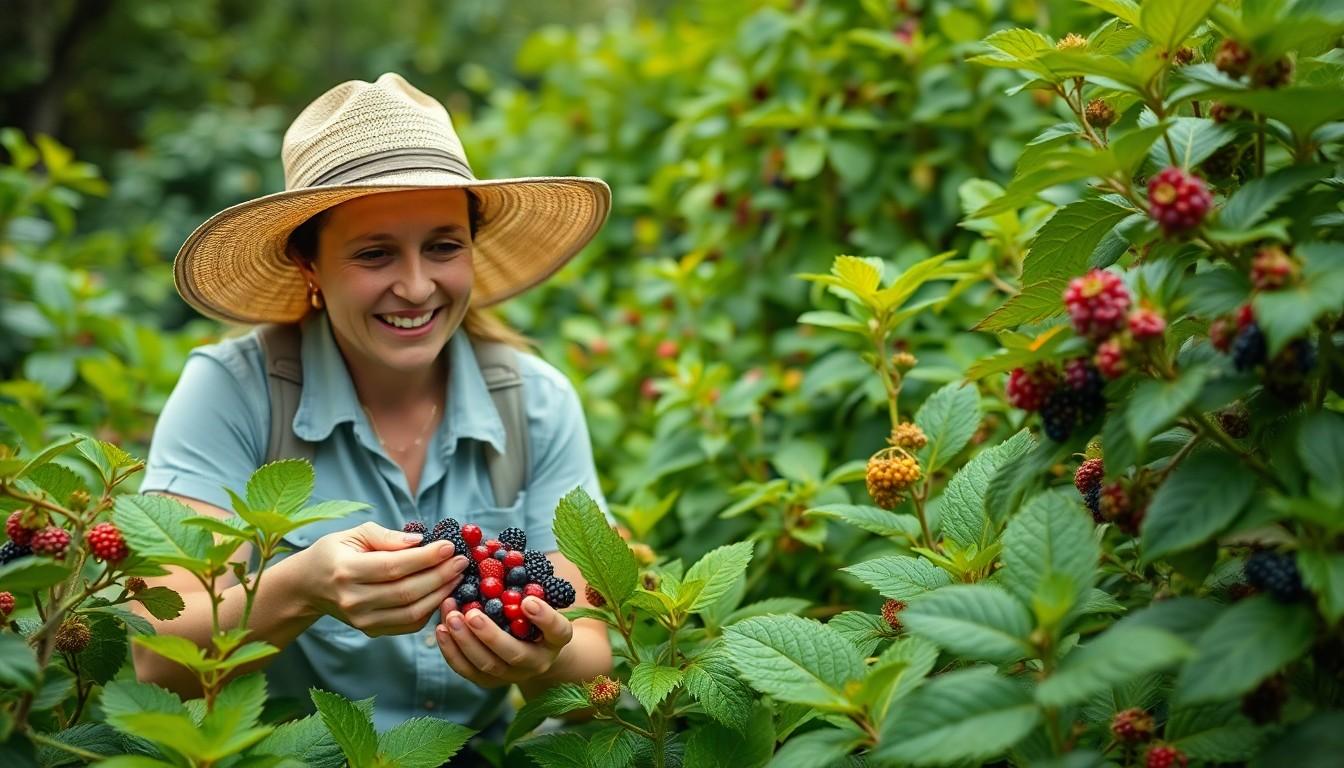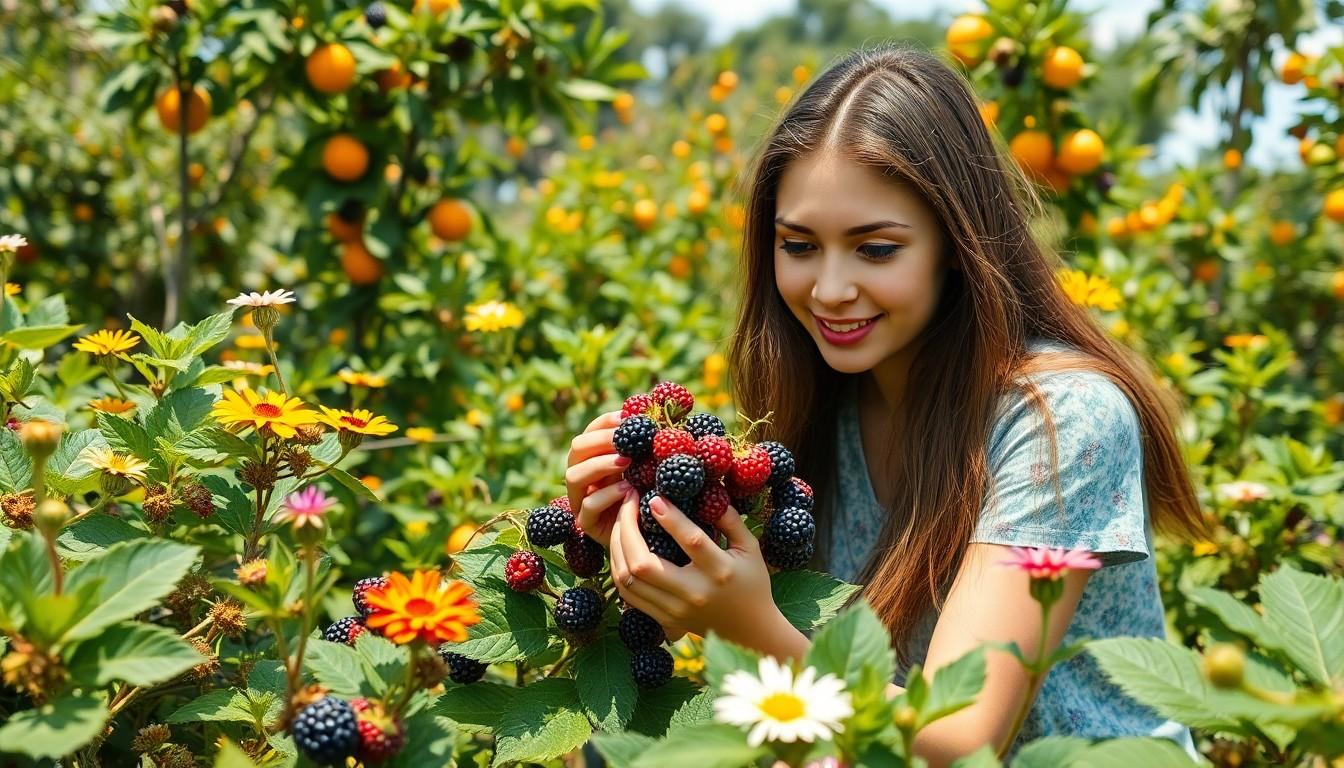Florida isn’t just about sun, sand, and surf; it’s also a hidden treasure trove of edible plants just waiting to be discovered. Imagine strolling through lush landscapes and spotting tasty treats thriving in the wild. From sweet berries to zesty herbs, nature’s pantry is packed with flavors that can elevate any dish.
But hold on—before you start munching on whatever green thing you find, it’s essential to know what’s safe to eat. The Sunshine State boasts a variety of edible plants that not only tantalize taste buds but also add a dash of adventure to meals. So grab your hat and sunscreen; it’s time to explore Florida’s edible wonders and impress your friends with your newfound foraging skills. Who knew eating your way through nature could be so much fun?
Edible Plants In Florida
Florida boasts a rich array of edible plants, making it a prime destination for foraging enthusiasts. From the coastal regions to its diverse wetlands, these landscapes offer plentiful options. Berries like blackberries and blueberries flourish in various habitats, providing sweet snacking.
Citrus trees, including oranges and grapefruits, grow abundantly and contribute tangy flavors to dishes. Herbs such as rosemary and basil thrive in the warm climate, enhancing culinary creations. Palmetto berries, common in the southeastern part of the state, serve as another unique foraging opportunity.
In addition, certain wildflowers play a role in Florida’s edible plant scene. Dandelion greens add a nutritious touch to salads, while the delicate petals of violets offer a stunning garnish. Knowing the environment is crucial; edible varieties often have specific growing conditions.
Potential foraging locations include state parks, beaches, and nature trails. Many locals and visitors enjoy identifying edible plants during outdoor excursions. Local knowledge enhances safety; understanding which plants are safe is vital.
Working with foraging experts or joining guided tours provides an excellent way to explore this natural pantry. As the interest in sustainable eating grows, residents increasingly embrace these native food sources. Engaging with Florida’s edible plants enriches culinary experiences while promoting a deeper connection with nature.
Popular Edible Plants
Florida’s diverse ecosystems offer a wealth of edible plants, attracting foraging enthusiasts. From coastal regions to wetlands, these plants provide delicious options for culinary exploration.
Berries And Fruits
Blackberries thrive in the undergrowth, offering a sweet and tart flavor. They often grow in clusters, making them easy to gather. Blueberries, found in various habitats, present juicy and nutritious treats, perfect for snacking. Citrus fruits like oranges and grapefruits flourish in abundance, bringing refreshing zest and vibrant color to meals. Palmetto berries, less common, provide a unique option with a rich taste, often enjoyed in syrups and jams. Local foragers identify these fruits among Florida’s scenery, enriching their culinary adventures.
Greens And Vegetables
Dandelion greens, packed with vitamins, contribute a bitter yet pleasant flavor to salads. Violets, often overlooked, add mild sweetness and vibrant color to dishes. Purslane boasts a succulent form and a peppery taste, perfect for salads or cooked dishes. Watercress thrives in wet areas, supplying peppery notes that enhance flavor profiles. Other edibles like wild garlic provide aromatic additions to various recipes. Exploring these greens opens up a world of natural flavors and textures, revealing the bounty Florida offers.
Foraging Practices
Foraging in Florida requires careful attention to safety and sustainability. Engaging with the local ecosystem enriches the experience.
Safety Considerations
Identifying edible plants necessitates knowledge of safe species. Always consult field guides or local experts to avoid toxic look-alikes. Filtering out potentially harmful plants can reduce risks significantly. Prioritize research on the specific plants, their habitats, and effects before consumption. Awareness contributes to safer foraging experiences. Always wash found plants thoroughly before eating to remove contaminants. Carry a guidebook or utilize smartphone apps for real-time identification assistance.
Sustainable Foraging Techniques
Implementing sustainable practices ensures plant populations thrive. Harvesting with care minimizes impact on ecosystems and encourages regrowth. Selecting mature plants for foraging helps preserve the overall health of the area. Only taking a small portion of what’s available promotes environmental balance. Rotating foraging locations allows different areas to recover. Documenting locations and plants can assist in planning future foraging trips responsibly. Supporting local conservation efforts strengthens ecosystem protection.
Culinary Uses Of Edible Plants
Florida’s edible plants offer diverse culinary applications that enhance local cuisine.
Traditional Recipes
Traditional Southern dishes frequently incorporate fresh edible plants found in Florida. For instance, blackberry cobbler combines sweet blackberries with flaky crust, creating a beloved dessert. Southern-style salads often feature dandelion greens or violets, adding unique flavors and textures. Citrus fruits like oranges and grapefruits enhance dressings and marinades, providing refreshing zest. Local jams and syrups utilize palmetto berries, allowing their distinct taste to shine. Recipes passed down through generations celebrate these ingredients, showcasing their importance in Florida’s culinary heritage.
Modern Innovations
Modern chefs embrace Florida’s edible plants to create innovative dishes. Cookbooks often highlight incorporating purslane into salads for a refreshing crunch or using watercress in gourmet soups, enhancing flavors with vibrant greens. Urban dining spots explore using locally foraged ingredients, integrating them into unique dishes that capture the essence of Florida’s ecology. Citrus-infused desserts delight patrons, while creative garnishes utilize violets, adding visual appeal and new flavors. These modern innovations showcase the versatility of Florida’s edible plants, inspiring culinary exploration and creativity.
Exploring Florida’s edible plants opens up a world of culinary possibilities and a deeper appreciation for nature. The state’s diverse ecosystems offer a bounty of flavors waiting to be discovered. By understanding the importance of safe foraging practices and sustainable harvesting, individuals can enjoy these natural treasures while preserving them for future generations.
Engaging with local cuisine through these ingredients not only enriches meals but also connects people to their heritage. Whether it’s a sweet blackberry dessert or a refreshing citrus salad, Florida’s edible plants provide unique tastes that enhance culinary creations. Embracing this foraging journey fosters a sense of adventure and respect for the environment.





